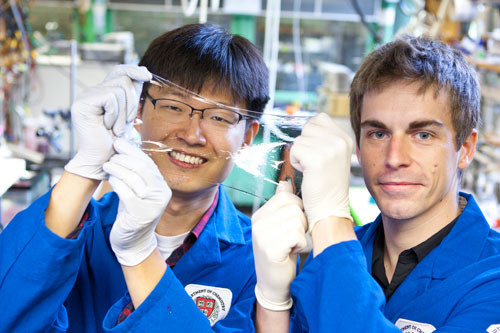
In a materials science laboratory at Harvard University, a transparent disk connected to a laptop fills the room with music—it’s the “Morning” prelude from Peer Gynt, played on an ionic speaker.
No ordinary speaker, it consists of a thin sheet of rubber sandwiched between two layers of a saltwater gel, and it’s as clear as a window. A high-voltage signal that runs across the surfaces and through the layers forces the rubber to rapidly contract and vibrate, producing sounds that span the entire audible spectrum, 20 hertz to 20 kilohertz (video in linked article).
But this is not an electronic device, nor has it ever been seen before. Published in the August 30 issue of Science, it represents the first demonstration that electrical charges carried by ions, rather than electrons, can be put to meaningful use in fast-moving, high-voltage devices.
